The following electric car road trip diary is written by Stan Gorton, a South Australian EV enthusiast who lives on Kangaroo Island with his dog Twiggy and a MY24 Polestar 2 long-range single motor.
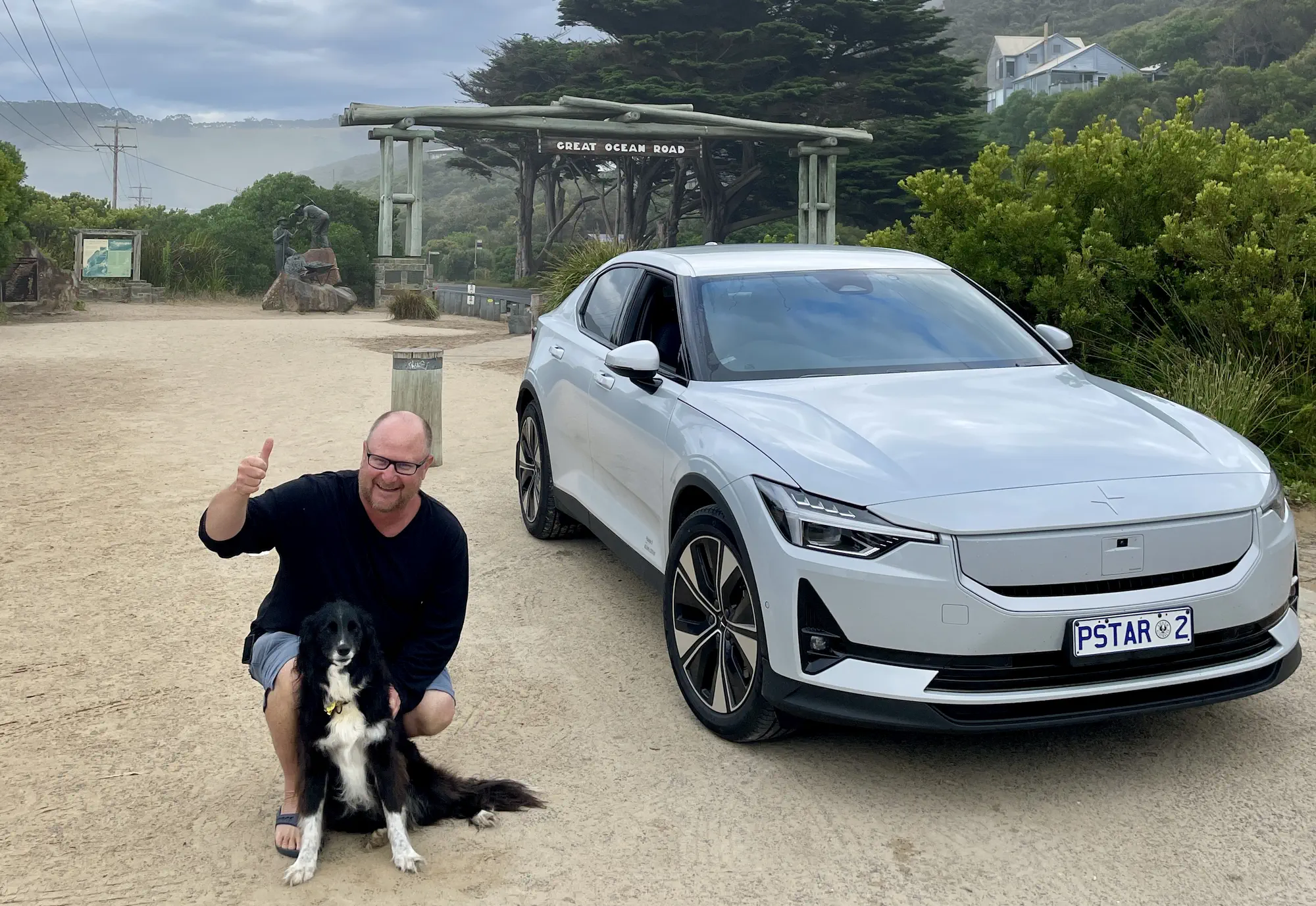
What better than to take a brand new, awesome electric vehicle on an epic road trip from home on Kangaroo Island to the far east and southern coasts, across this vast, sunburned country.
When my MY24 long-range, single-motor Polestar 2 was first delivered to me on Kangaroo Island, on the back of a truck via the ferry, I wrote a glowing article.
It was published in my newspaper, The Islander, headlined “I’m delighted with my electric vehicle”.
And now after a 6,200km / 4,000-mile journey, I can now say that I am truly thrilled and amazed at the abilities of my electric vehicle, and exactly what any capable EV can achieve these days – and it’s just going to get easier.
Final stats from my epic Polestar 2 road trip from Kangaroo Island to the east coast and back – visiting Pinnaroo, Hay, Parkes, Dubbo, Armidale, Lismore, Canberra, Narooma, Mystery Bay, west Gippsland, the Great Ocean Road, western Victoria, Limestone Coast and Victor Harbor.
The final readings on the car’s drivers’ dashboard, yes the Polestar 2 has one, was as follows:
Trip Manual (TM): 6 221.7 km
Efficiency: 15.8 kWh/100km
Driving time: 92:09 hours
Average speed: 70 km/h
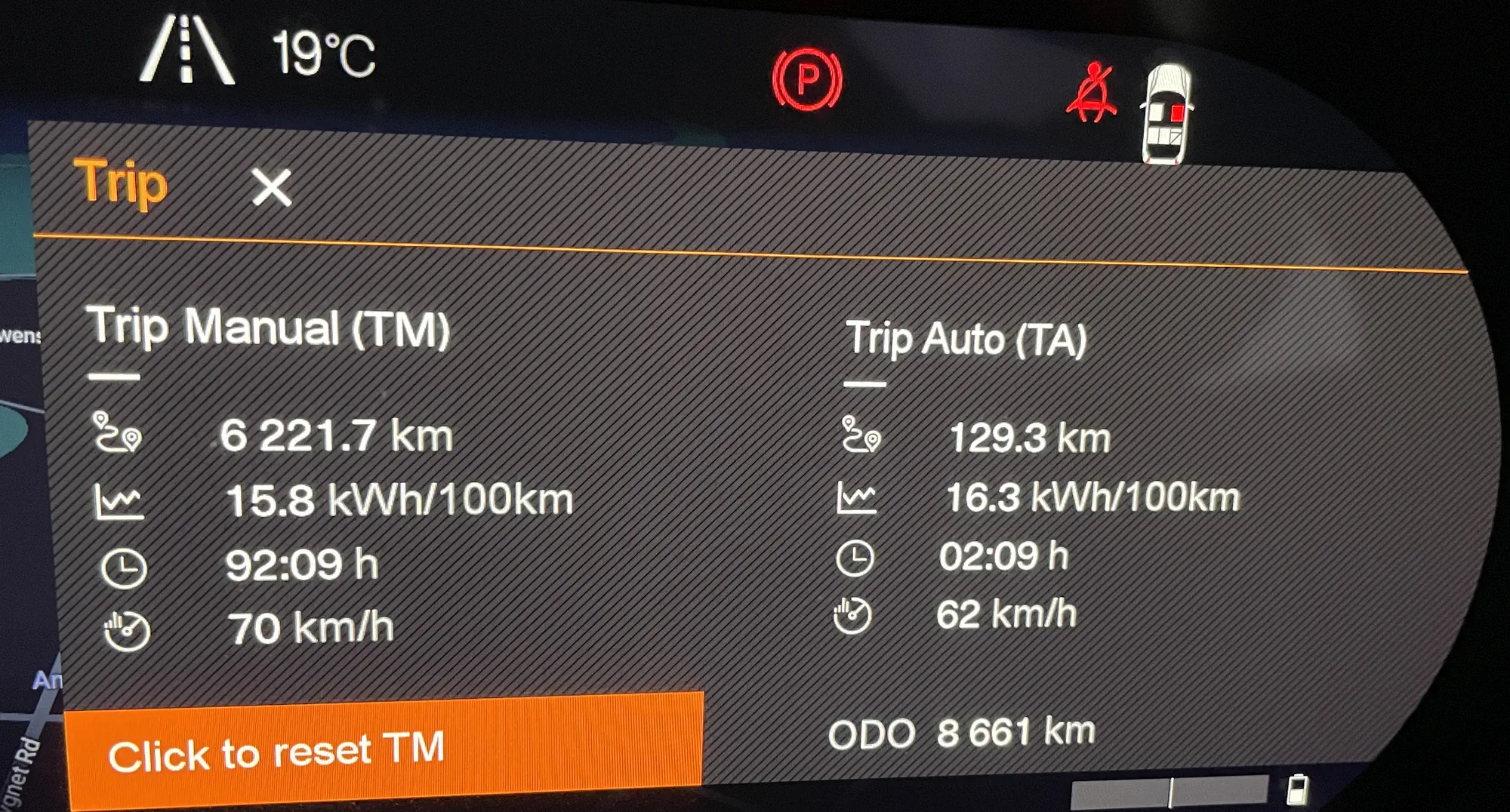
Driving what I think is the best looking and most capable electric vehicle made the experience an absolute pleasure. The new model year 2024 Polestar 2 long-range single motor is now not only rear-wheel-drive – which is huge and as it should be – it has the official longest range in Australia of 654km mixed driving.
I found my car has a real-world road trip range of just under 500km doing 100 to 110km on Australia’s highways.
This also takes into account a buffer at either end, as at no point during the trip did I charge above 100 per cent or drain below 20 per cent.
While being ultra cautious and charging as often as possible, my standard charge was 90 per cent, and that always got me to my next destination with at least 20 per cent, more often that not 30 per cent.
I fully acknowledge this would have added time to the trips, but this journey for me was about testing every charger I could get, reporting it on PlugShare and seeing the sights briefly on the way.
After 6,200km, I achieved an efficiency of 15.8kWh per 100 kilometres and that was not driving for efficiency, or hypermiling as they call it, but rather driving with spirit, enjoying the road with the air-conditioner on pretty much at all times. When I charged to 90 per cent the car’s onboard range estimation was consistently 480km.
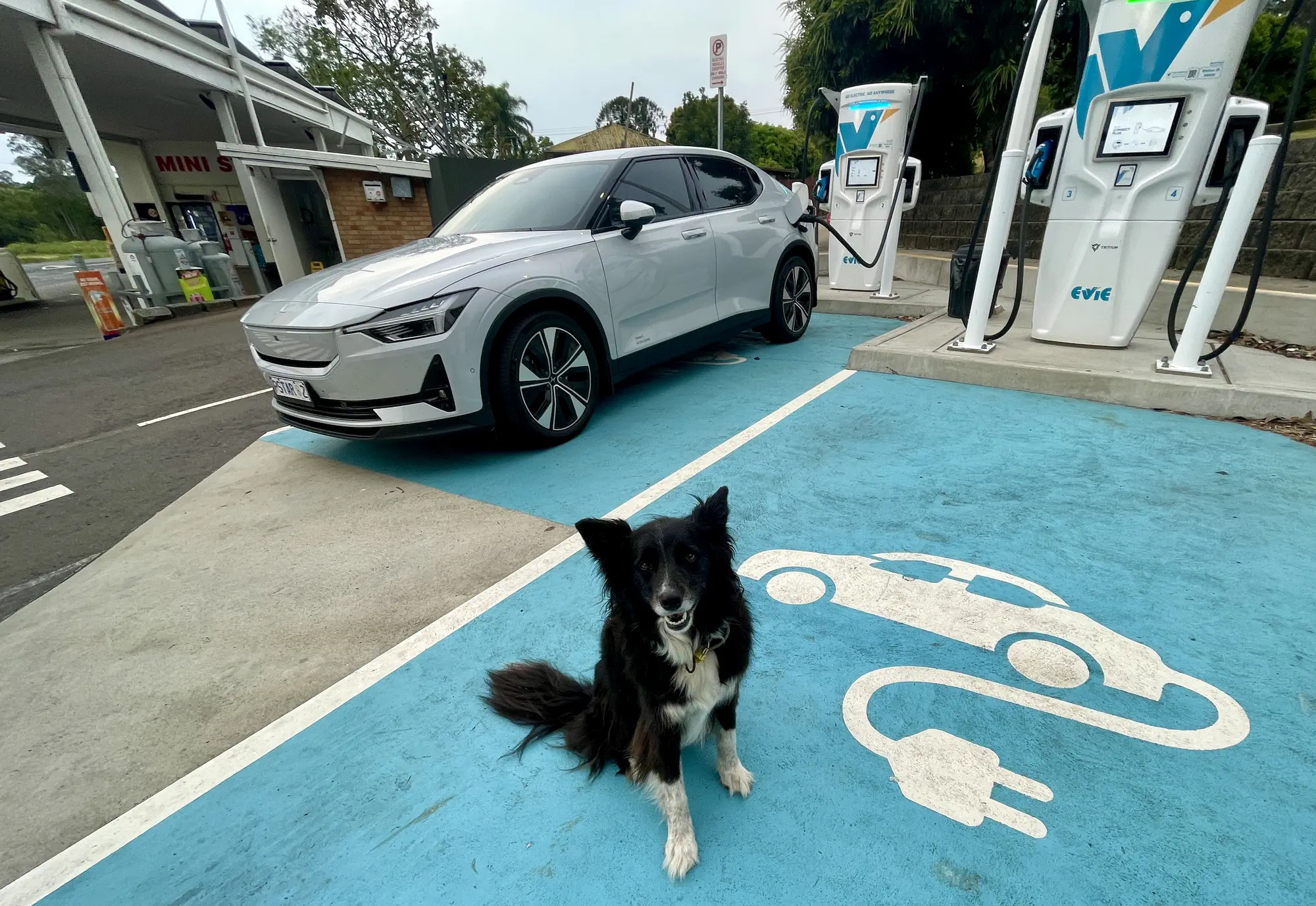
Having the cutest collie dog Twiggy on board helped a lot with starting conversations as well. With a name like Twiggy, I could not help but make her my supermodel by posing her in front of each charger. The Polestar 2 certainly was also a conversation starter both amongst non-EV users as well as more experienced EV drivers at stations, including Tesla drivers.
One common question from non EV drivers was how much it cost to charge and how long it took to charge. The simple answer is charging at fast chargers takes about quarter to half the prices of petrol, and takes on average about 30 minutes or less.
For the first leg of the trip from Kangaroo Island, crossing NSW from the Hay Plains to Lismore. Trip totals for the three days were 2279.4km travelled, average consumption 16.2 kWh/100km, driving for 30:19 hours and an average speed 78 km/h.
There were a total of 13 fast/rapid charges costing $248. I stopped at so many chargers as I wanted to check out and also being a novice, following the mantra of “always be charging”.
The next section on a very busy December 23 from Lismore to Canberra is almost spot on 1,000km and this trip cost $94.61, taking 10 hours and 10 minutes driving time and 2 hours 20 minutes charging time at four charge stations.
Speaking of charging I would’ve done about 35 charges and only one didn’t work being unable to give me charge. This was the NRMA charger in Bega and I was able to find the Eden Motel to do a quick 7 kW top up in order to make it to Cann River. But in the end I made it with 30 per cent and so didn’t really need that.
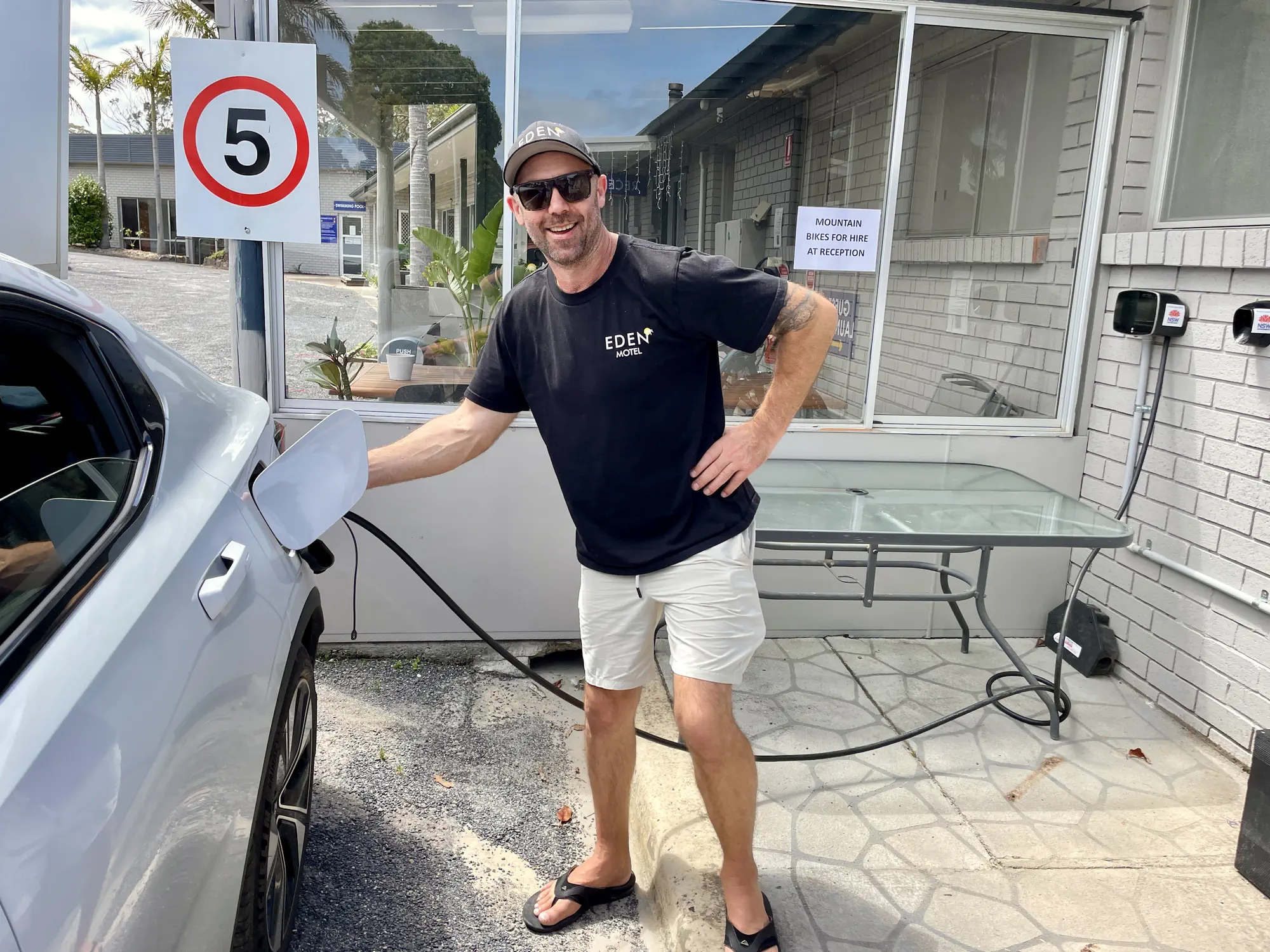
The bottom line is that I found the charging network worked just fine and much of the complaints seem unfounded, perhaps I was just lucky.
EDITOR: Since Stan mostly drove the roads less travelled, that mostly explains why he didn’t encounter many broken/out of order chargers. Chargers that don’t work are usually older and have had heavy use over their lives eg: along the Hume Highway between Sydney and Melbourne.
The hardest thing about an electric vehicle journey is having to have all the apps to make the charges work. That being said it’s not that hard to make them all work, and now having RFID cards makes it a lot easier. Let’s hope it continues to get easier to pay, even by just flashing a single card.
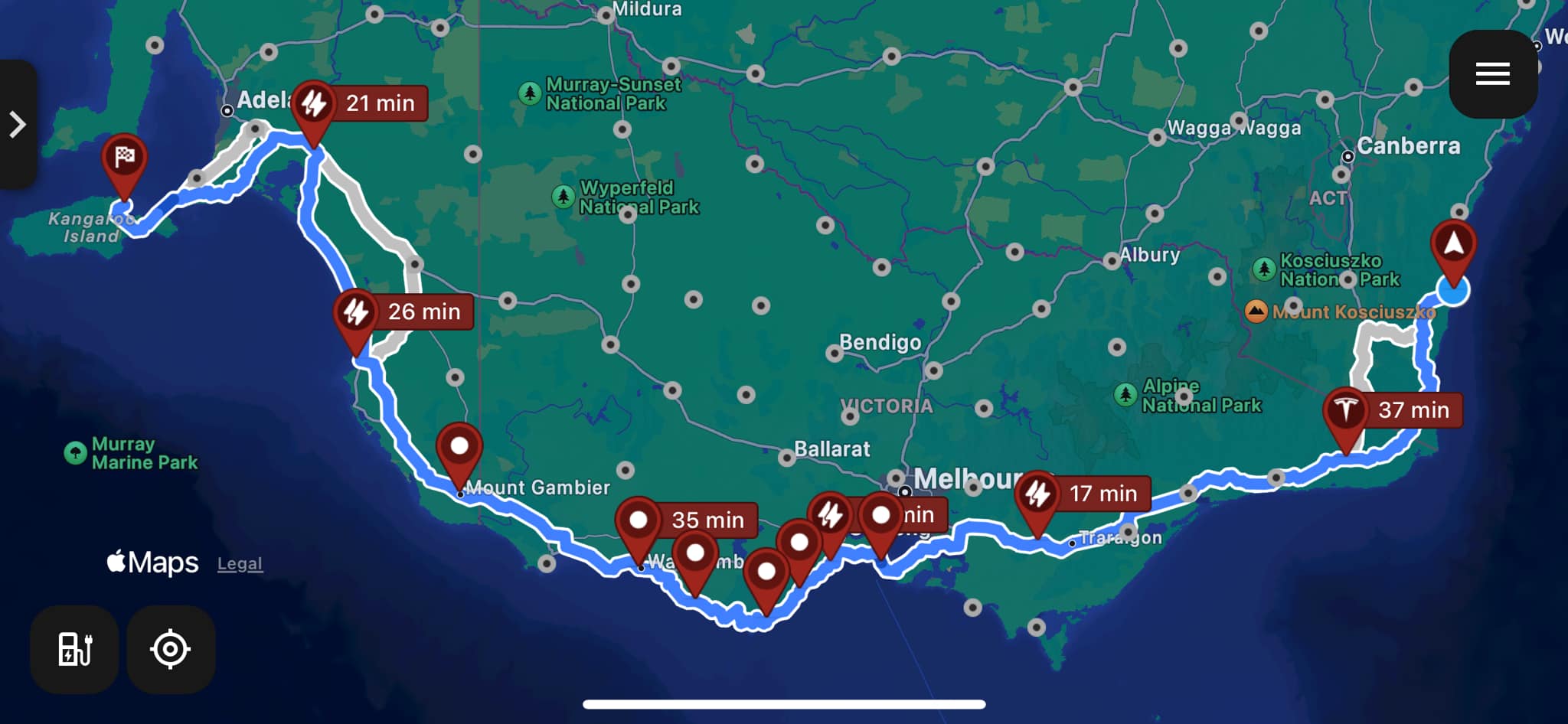
The Tesla supercharging network was fantastic, as it is quite widespread and helped me in some remote locations particularly Tamworth. It wasn’t without glitches and a couple of times I had to move from charger to charger to get to work.
I was also impressed with the Evie network that was very reliable, while chargers attached to existing fuel providers, such as BP and Ampol were also excellent.
The big service station at Ampol Pheasants is well worth checking out and I can’t wait to see the day they start ripping out bowsers and replacing them with chargers.
Upon arrival back in South Australia, it was fantastic to see a RAA representative working on its charge stations and doing an audit at the new Goolwa fast charger.
The day before, my first experience back in South Australia was using the nice new chargers at Kingston Southeast which are located in quite a remote location, and will allow other people to travel there.
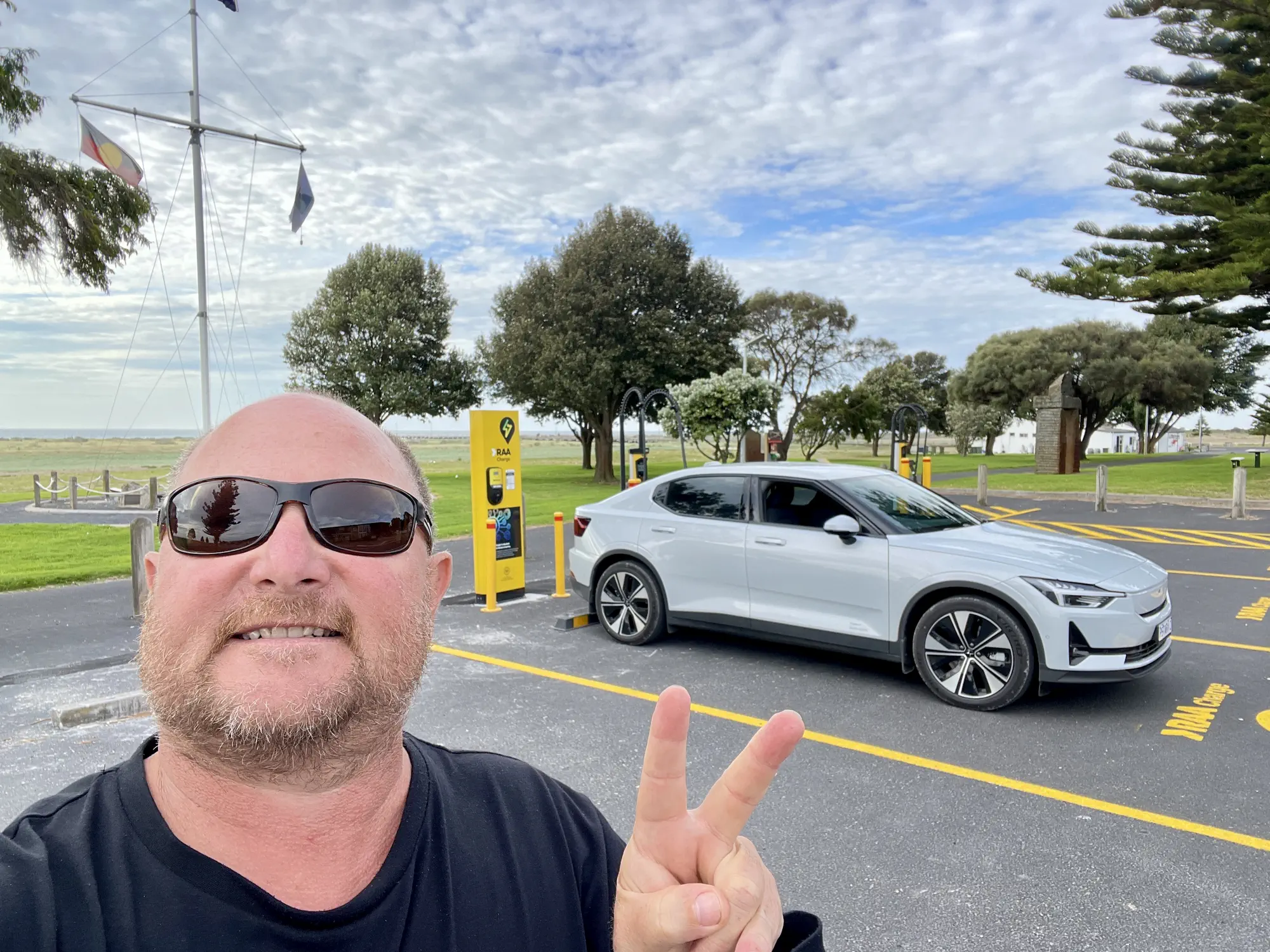
Regarding travelling in the busy times with a dog, I was having real trouble finding accommodation so a couple of times I had to resort to campgrounds and free camping.
The visitor centre at Warrnambool was great and they suggested an awesome camp at Panmure, while in Kingston, I looked up free camping online to find a fantastic spot at The Granites beach to do some Polestar 2 camping.
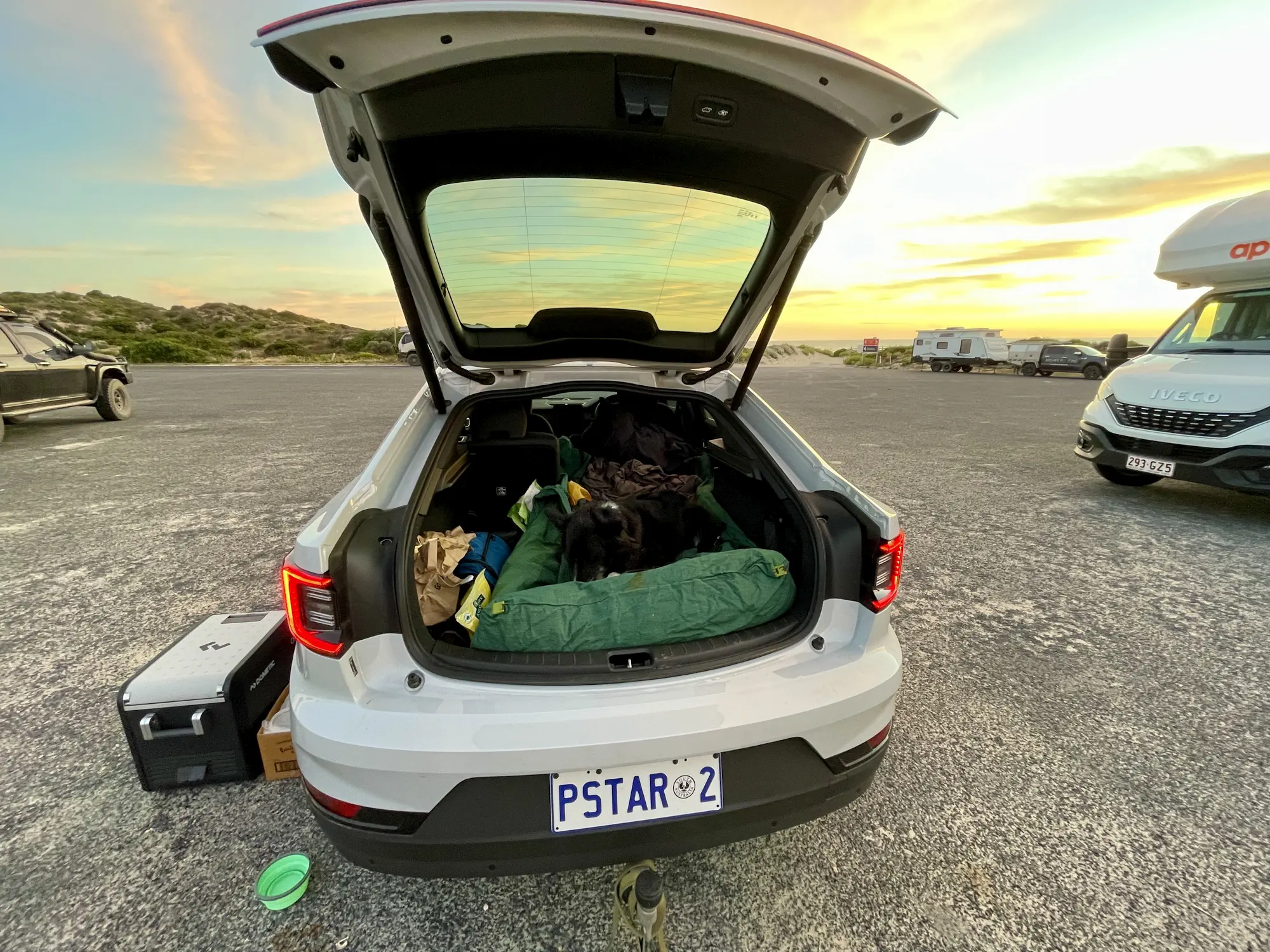
The Polestar 2 is actually pretty good for camping and shows that electric vehicles do provide utility. It’s a hatchback so I simply fold the back seats down and roll a swag out in the back, it fits one person and one dog nicely, although I do have to take out the fridge and I do travel light.
The car also comes with a retractable towbar which is handy to tie the lead on when camping.
The frunk up front housed not only charging cables and extension cord but also my small two-person tent, which came in handy in rainy Victoria. It amazes me that Australians still buy large SUVs when they don’t really need them and you can get plenty out of plenty of utility out of the current EVs.
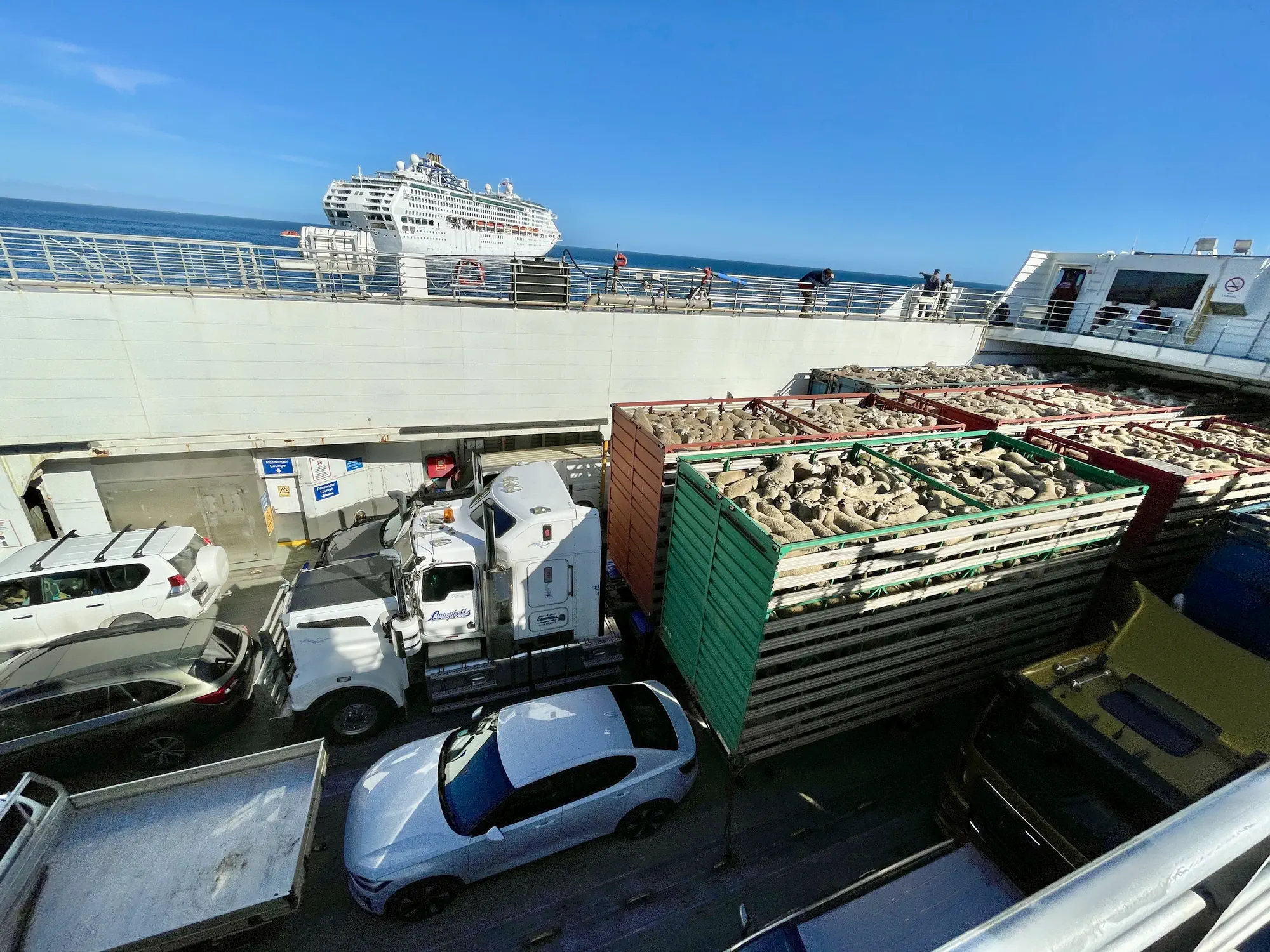
The three ferry experiences:
On this particular EV road trip I did three very trips on the trip back from the south coast to Kangaroo Island.
The first was the Sorrento Queenscliff ferry, which was a pleasure, although being on the very steep ramp that tilted up before sailing was quite interesting.
The second ferry crossing was at Wellington over the Murray River and on this very short trip, I was interested and excited to see a sleek Hyundai Ioniq 6 on board, which happened to belong to the RAA technician that was also on his way to the Goolwa rapid charger.
I later chatted to him about the audit of the charger, which was being done with the council and a local electrician. He informed me that the new rapid charger at Shop was going to go ahead at Lloyd Collins Park in Penneshaw in coming months, and also more infrastructure for the far West Coast to address the bottleneck across the Nullarbor plain, this was all good news.
The third ferry trip was across to KI. With unseasonably stormy weather, the crossing turned out to be quite lumpy with car alarms going off and calls for drivers to go back down and put their hand brakes on. Luckily my Polestar 2 came through unscathed but this nervous owner did go down to the lower decks just to see what was going on.
All in all it was a fantastic journey, and the Polestar 2 performed flawlessly, an absolute pleasure to drive. Learned a lot about charging and told lots of people about EVs. Actually, I’m ready to hit the road again, having just booked two more ferry crossing trips for the Polestar 2 in the coming weeks.
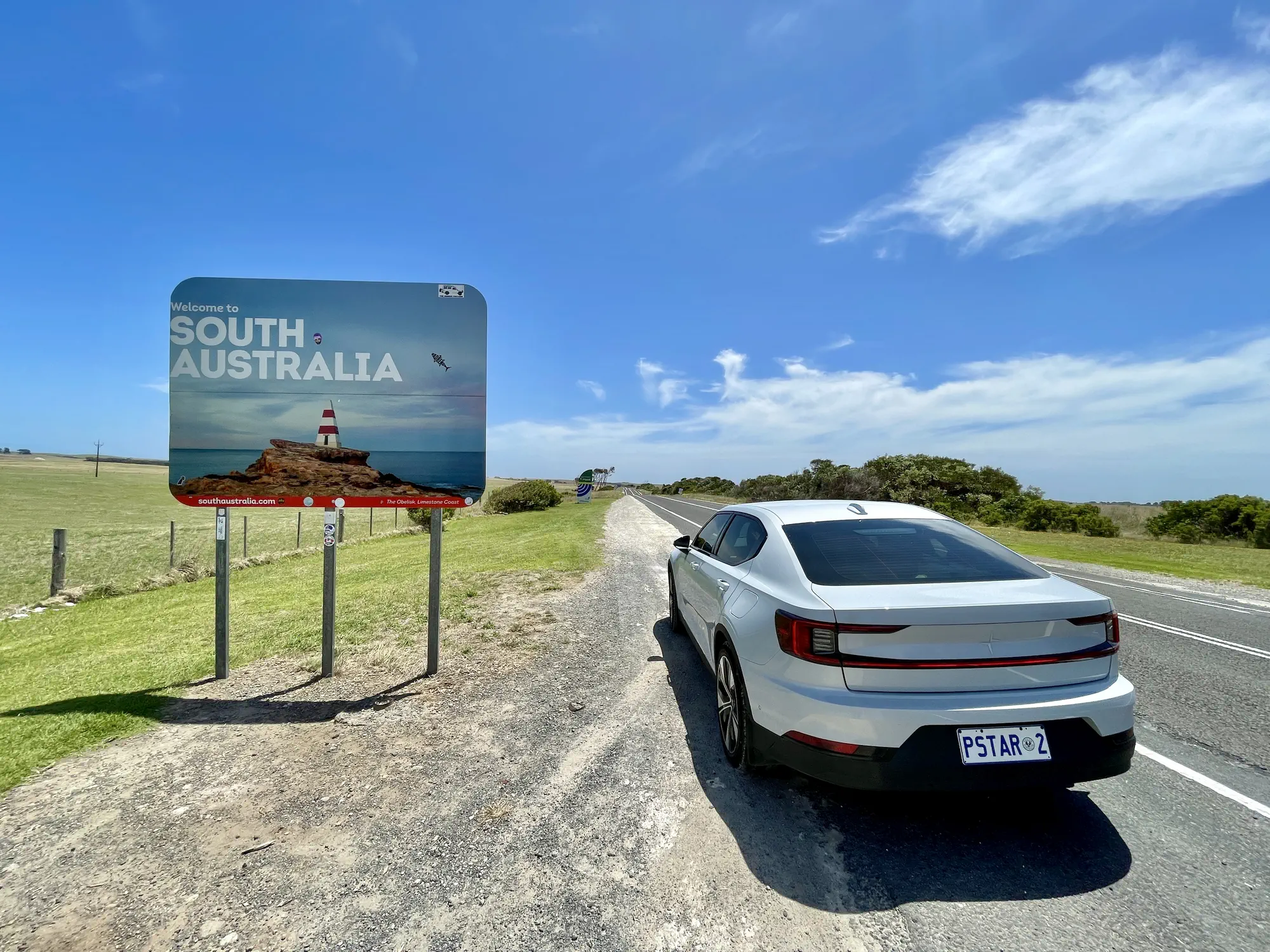
First I’m heading across South Australia to see my old haunts and friends at Port Lincoln and then next month, I am taking the Polestar 2 back across the eastern half to attend the even bigger Everything Electric show at the Sydney Olympic Park – very excited about that.
Later in the year, I would like to head back to SA’s west coast to check out the charger situation on this side of the Nullarbor charging gap, before returning back to Kangaroo Island to prepare for a big trip up to the Pilbara in Western Australia.
EDITOR: I’m publishing a regular series of articles with the views of Australian EV owners about their EV ownership experience.
This will help fill an information gap as the majority of electric car news articles are about new car launches and there’s relatively little published about the longer term Australian ownership experience after you’ve paid for your electric car. Hopefully this shared information helps other Aussies make their own EV purchase decision.
If you’re an Australian electric vehicle owner and would like to share your road trip experience please contact me directly or add a comment below and let me know.

Leave a Reply